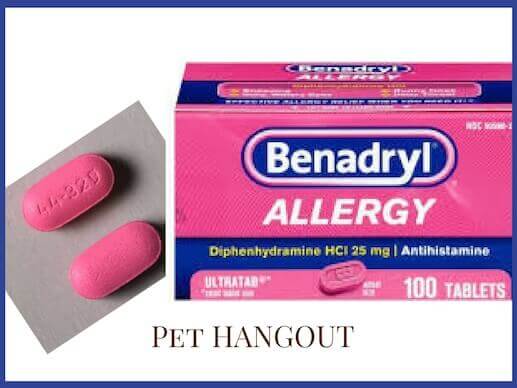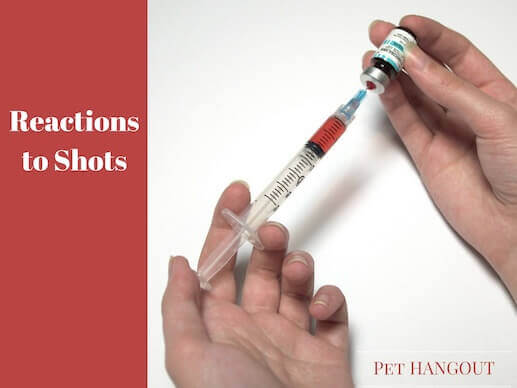Your shopping cart is empty!
Can u give dramin e &benadryl at the same for dog

A lot of people worry...
Is it safe for Benadryl to be administered to my dog? One major concern is that it is not approved by the FDA. However, keep in mind that most OTC (over the counter) drugs are not reviewed or approved by the FDA. Although Benadryl can have some side effects, the benefit to your dog could outweigh any negative issues.
Benadryl is the brand name for the active ingredient (AI) diphenhydramine HCL. This active ingredient has the ability to cross the blood-brain barrier, making it very effective, though there could be adverse effects with its use.

Normally, they are mild and do not cause the need for major concern. So relax and read on to learn symptoms that Benadryl can help, proper dosage amounts, methods for successfully giving your pet Benadryl, and some more common side effects.
And I just learned something I think would benefit you if you need to purchase Benadryl for your pet.
Did you know Chewy sells this for literally pennies? And yes, it's the same stuff you buy over the counter at Walgreens!
The only thing you will need is a prescription from your Vet which won't be hard to get if your pup has any of the problems below...
Symptoms Benadryl can treat in Dogs:




How much Benadryl can you give a dog?
The amount of Benadryl a dog is administered depends on his or her size.
To be precise, 1mg per pound of body weight is the best prescription for dogs. Therefore, a 30-pound dog should be administered 30 mg of Benadryl. And a 24-pound dog should be administered 24mg. The dog should normally be administered three times daily, although consult your dog's veterinarian for a custom recommendation.
Benadryl Dosage = Your dog's weight in milligrams. Please don't guess, weigh your dog first!

You must ensure that dosage is followed strictly to avoid any complications.
However, in cases of overdose, look for side effects like:
If you suspect an overdose, stop giving Benadryl and contact your veterinarian immediately. Do not go on to administer any medications without professional advice at this point.

Tips for Proper Administration of Benadryl to your Dog
Side effects of Benadryl:
Care should be taken when administering Benadryl for dogs as there are side effects.
**Note: If you are already administering any drugs prior to using Benadryl, you need to check with your veterinarian to see if there are any potential dangers or side effects that could arise by adding an additional drug to their system.
Common side effects of Benadryl include:

**Note: If you see a continuation of these common side effects where it is impacting your dog's quality of life, we recommend stopping the Benadryl and consulting a vet.
Rare side effects: (Please take your dog right away to the vet for any of these)

Frequently asked questions of dog owners include:
1 - How long does it take for Benadryl to start working?
2 - Should I administer the medicine by pill, injection or liquid form?
3 - Is Benadryl safe for puppies?
4 - Where can I buy Benadryl (or its generic form)?
Pet Hangout wants to remind you that there are many symptoms that Benadryl can effectively treat in your dog like allergies, anxiety, and insomnia to name a few. Understanding your dog's health BEFORE giving this drug will help you gain a sense of how helpful the drug is to your dog. It will also help you see any common or rare side effects that may occur. As with any drug, there are pros and cons to consider. Always balance the positive help that the drug is giving your dog against any negative side effects. The recommended daily dose is your dog's weight in milligrams. Always start conservative with the dose and observe your dog for any negative reactions. If you see huge areas of concern with your pet after giving the drug, always be safe and get your dog to a vet right away.

Was this information helpful to you?
Have questions for us about Benadryl for your dog?
Leave a question or comment below ~ ~ We will respond back to you!
...and click our LIKE box below to get brownie points ;-)
In the mood for a FREE Pet Grooming Glove today? Check out how to claim yours!
Although some vets say you can give both medicines to your dog, I would caution in doing this. The meds sometimes work together to increase the side effects and could make your dog sick.At the bare minimum, if you are going to dose with both meds, I would give less than the recommended dosage by your vet for each med.Thanks for reaching out to us and hope you find this reply helpful!The Pet Hangout Team
I have been trying to put drops to clean my pups ears! He refuses! Vet suggested Benadryl so I gave him some according to his weight 130 lbs! He was alert and wouldn’t let me put in the drops! Lolo silly Samson! This morning though his ear was draining and tried to get him to the vet and he refused to get into the vets office and he’ll no no one is touching his ear! Help! I love my pup and hate to see him suffering like this!